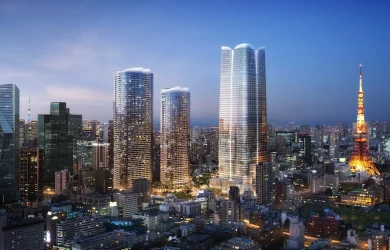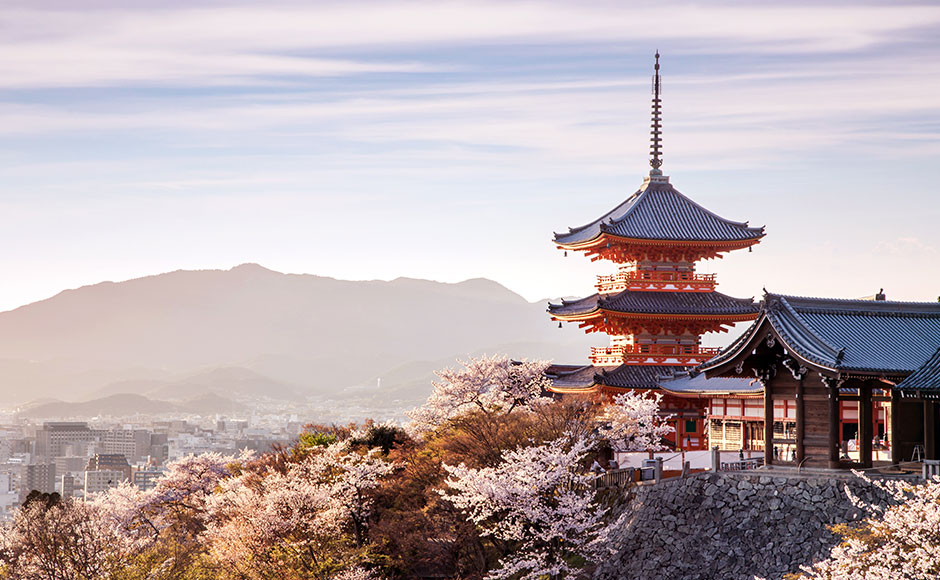
April 15, 2022
24 Hours in and around Kiyomizudera
How to best enjoy a trip to this signature World Heritage site's local area
Mention Japan and sightseeing and the first name that will come to most people’s minds is Kyoto. Ranked the world’s best big city by readers of Conde Nast Traveler magazine in 2020, it’s the kind of place you can spend several days touring around, yet only scratch the surface. Many who go there attempt to tick off as many temples and shrines as they can. That’s fine if you have a week or so in the city, but for those with limited time, cramming in too many sites can be tiring. During our short visit, we decided to stay in just one area, close to the renowned Kiyomizudera Temple. Despite only having 24 hours, we still managed to fit quite a bit in, without exhausting ourselves.
Romantic Rocks and a Spinning Statue at Kiyomizudera
Some say, once you’ve seen one temple in Kyoto, you’ve seen them all. There’s an element of truth to that, especially when walking around the city for too long. However, there are also temples and shrines that stand out above the rest. Kiyomizudera unquestionably belongs in that category. It’s arguably the premier attraction in the city — and for good reason.
The 10-minute walk up the hill from the nearby bus stop is usually swarming with people. However, due to the covid-19 pandemic, the streets were almost empty when we visited. The temple grounds are at the top of the hill and they are most famous for the three-storied pagoda at the entrance and the main wooden stage behind it. Beyond these two structures, though, there’s much to see and do.
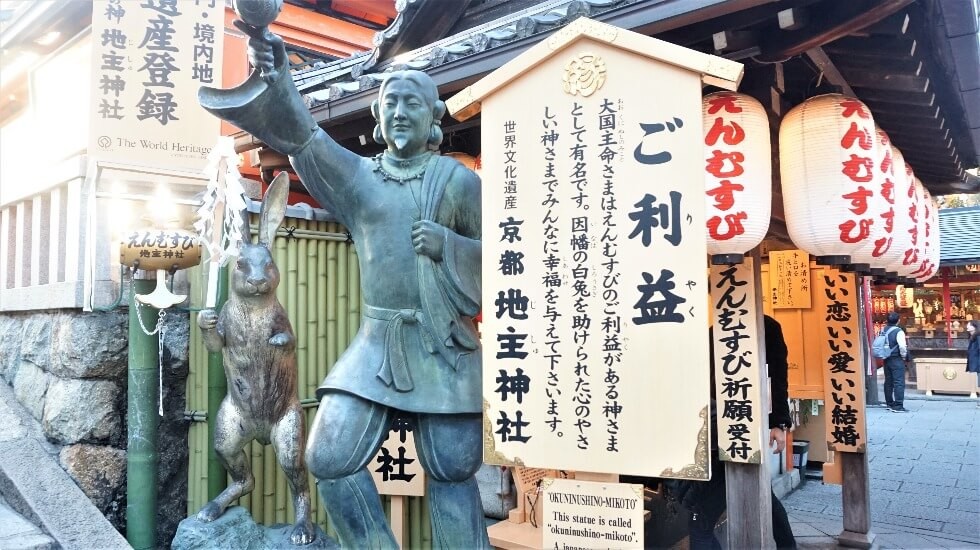
It’s a great location for couples, not just because of the stunning views of Kyoto’s skyline and the Koyasu pagoda, but also due to Jishu Shrine at the back of the wooden stage. Here, you’ll find the smiling statue of Okuninushi, the god of relationships, as well as two stones set 18 meters apart. If you can make it from one to the other with your eyes closed, your relationship prayers will be answered.
Drinking from one of the streams at the Otowa Waterfall is also said to benefit one’s love life. The other two streams are believed to bring longevity and success at school. There are plenty of other places around the grounds to pray for good luck. One of the most interesting is the one-of-a-kind Kubifuri (spinning) Jizo statue in front of Zenkojido Hall. Made in the image of Jizo Bosatsu, the guardian deity of children and travelers, you make your wish before the statue, then turn its head 360 degrees.
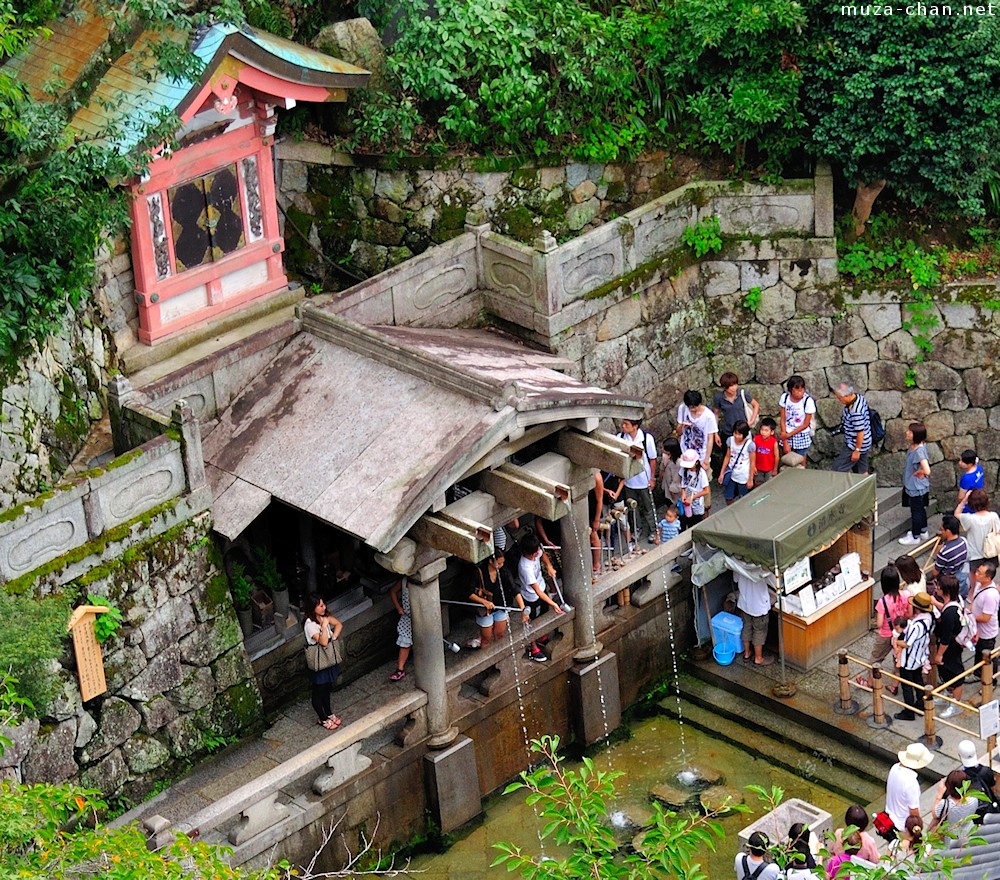
A Night at an Old Elementary School
After enjoying the sunset at Kiyomizudera followed by a look around some of the shops nearby, it was time to check in to The Hotel Seiryu Kyoto Kiyomizu. The previous site of Kiyomizu Elementary School, which had been located there from 1933 to 2011, the building has been converted into a luxurious accommodation with 48 rooms.
Walking around the place, you can find remnants of the old school here and there including a cute little red post box in what used to be the playground, and doodles on the staircase from former students.
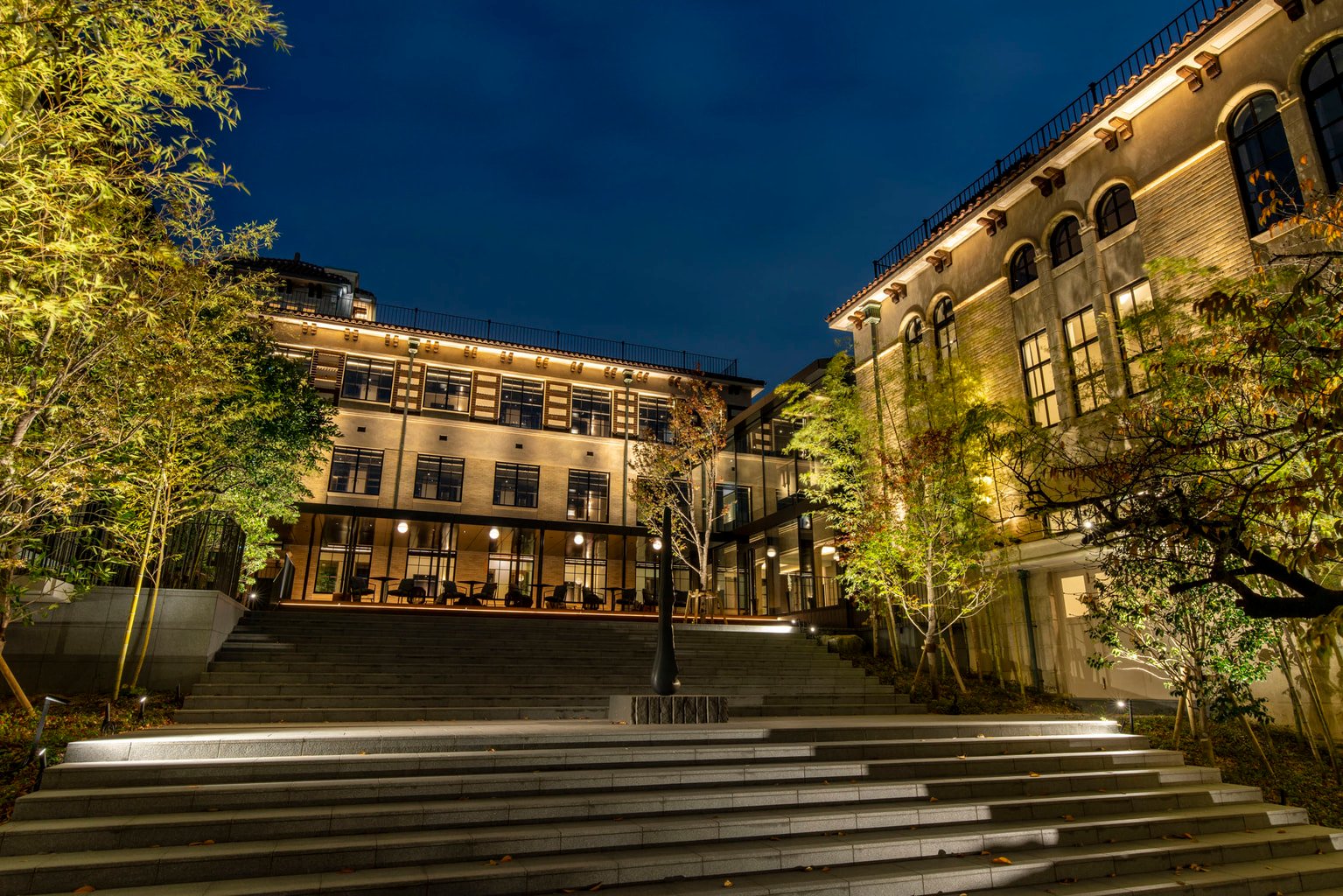
In addition to the historical elements associated with the hotel, there are also spectacular views. Some rooms look out onto the yard, while other guests are fortunate enough to have the impressive sight of the 46-meter tall Yasaka Pagoda of Hokanji Temple facing them when they open their curtains. The five-story pagoda can also be seen from the guest lounge where those staying can enjoy free snacks and drinks, including alcohol.
Within the hotel grounds, on the first floor, there is the sumptuous bistro Benoit Kyoto. First opened in Paris more than a century ago, it serves classic French cuisine that incorporates seasonal flavors and ingredients. After enjoying some exquisite duck with a couple of glasses of wine, it was then time to enjoy a cocktail at the stylish rooftop bar K36 while looking across the spectacular nightscape of Kyoto.
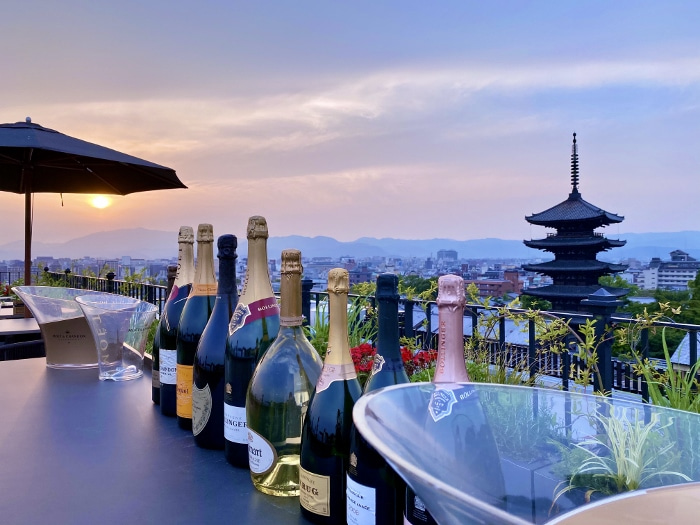
A Sound Bath with a Tibetan Monk
It was then an early start the next morning to try one of the hotel’s activities. The stillness and calmness of Kyoto make it the ideal destination to practice Zen meditation. There are several temples throughout the city that provide mindfulness sessions in a tranquil environment. During our stay, however, we wanted to try something even more unique: A Zazen sound bath with a Tibetan Buddhist monk.
We sat down for our 90-minute session in a small room looking out onto an idyllic Japanese garden. It felt like the ideal surroundings for what truly was a serene experience. The chief priest uses what are known as crystal singing bowls that emit distinctive vibrations. These vibrations stimulate the alpha and theta brain wave frequencies, helping you slip into a more relaxed state.
For those who struggle to clear their minds during silent meditation, this approach does feel more effective. At ¥30,00, it is expensive, but for those wanting to try something a bit different during their trip to Kyoto, it’s worth it. The hotel has a variety of other activities to choose from as well including a helicopter flight plan and a tea ceremony.
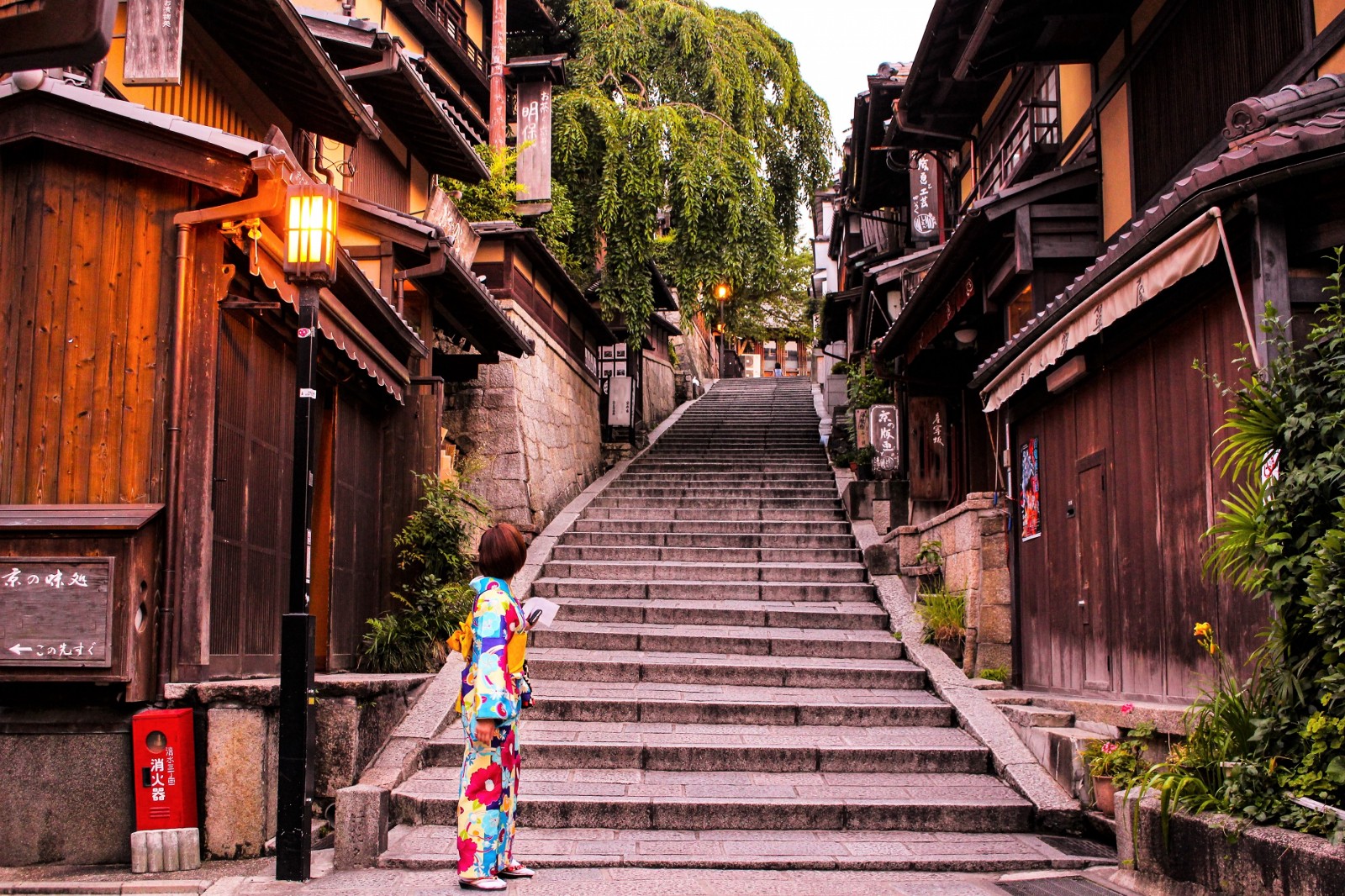
A Stroll Around Southern Higashiyama
Before checking out, there was time for a private hot spring bath at the hotel (¥6,000 for 90 minutes) followed by a healthy breakfast at Restaurant Library The Hotel Seiryu, a unique setting, that as the name suggests, looks more like a library than a dining area.
We then had a couple of hours to kill before heading to the city center to get the shinkansen back to Tokyo. With the sun out and few people around, it was the perfect day for a stroll. The Seiryu Hotel is surrounded by some of the most scenic streets in the whole country.
While most people head to Gion to experience traditional streets in Kyoto, the stone-paved alleyways of Ishibei Koji, Ninenzaka and Sannenzaka in Southern Higashiyama are arguably even prettier. Home to many immaculately kept inns, bars and restaurants, walking around this area felt like we had been transported back to the Edo Period. It was the perfect way to finish what had been a very short, yet satisfying stay in Kyoto.





